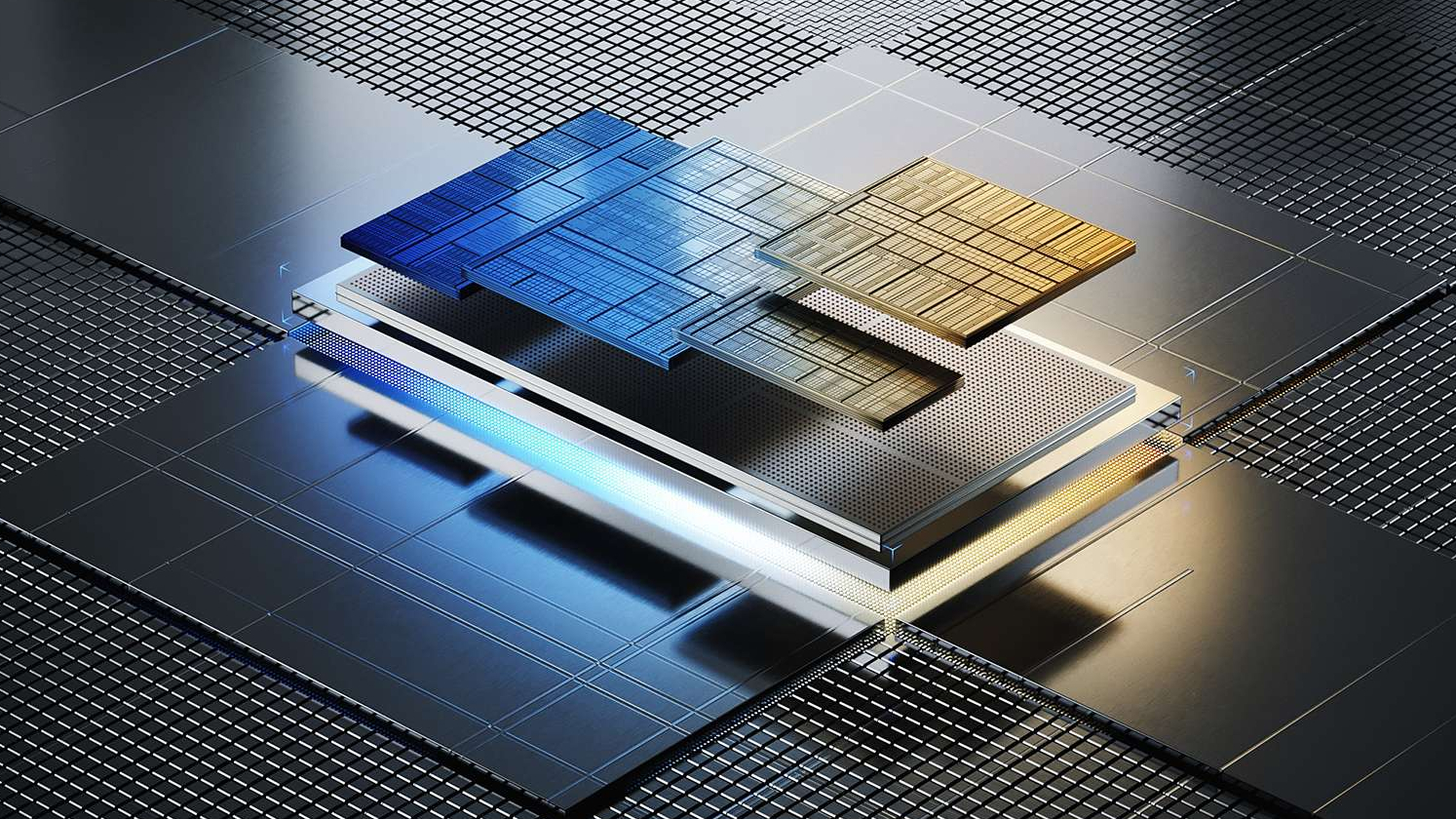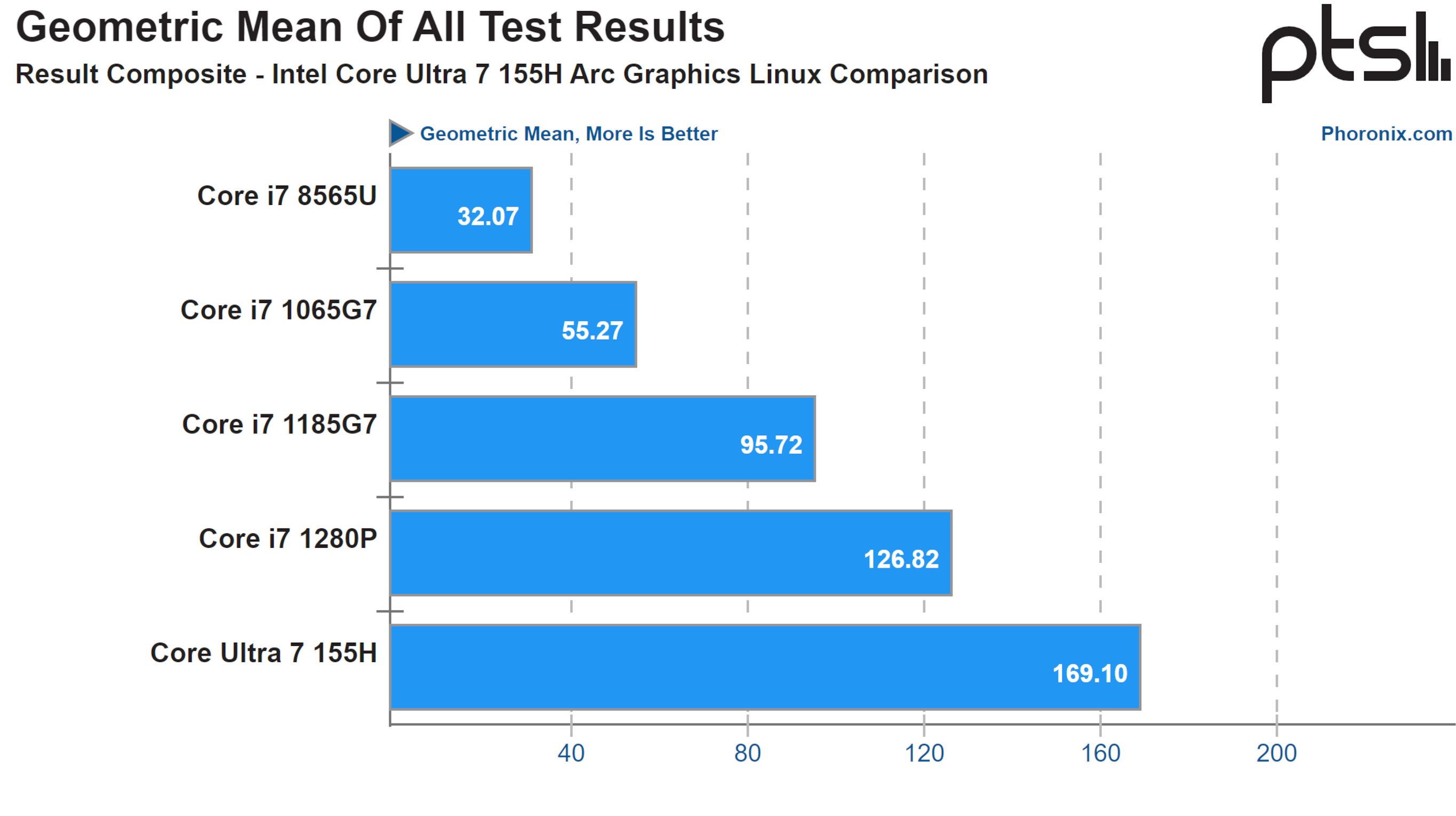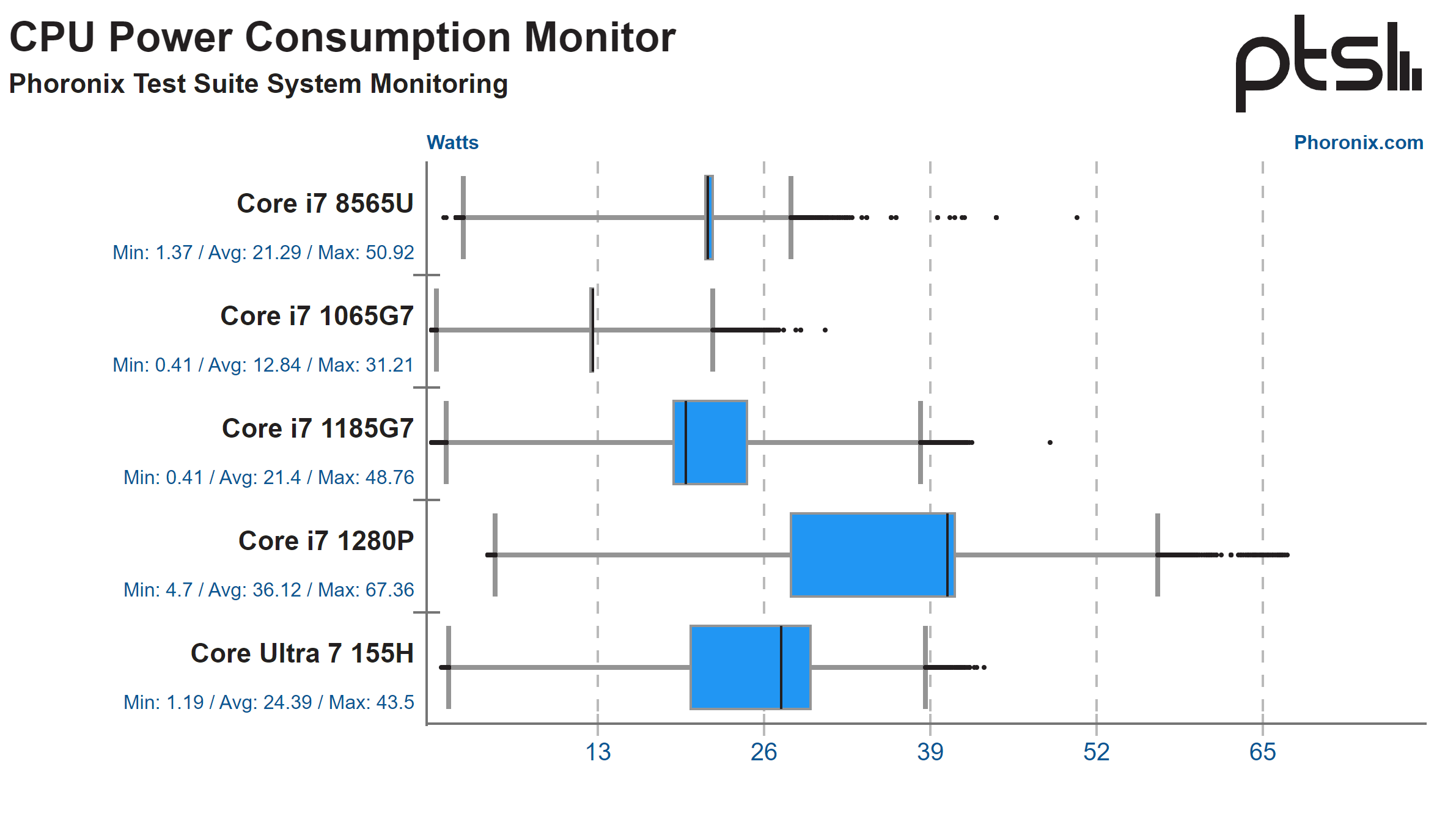
Among the improvements seen with Intel's Meteor Lake launch has been a great jump in power and efficiency in their integrated graphics. The Arc graphics inside the latest Intel CPU can perform better than the competing Radeon 780M iGPU from AMD, and this may be the first time Intel is beating AMD in integrated graphics.
So, how much of an improvement is Intel's Meteor Lake integrated graphics compared to past generations? Phoronix sought out the answer to this question and published it in the form of a set of iGPU benchmarks across 5 Intel laptop CPUs, each from a different generation. All testing was conducted in Linux, like their past iGPU testing and on-launch Meteor Lake Linux CPU testing.
The GPU testing being discussed here isn't quite as thorough as that prior 370 CPU benchmark run, but still varied enough to paint a clear picture of Intel iGPU evolution from late 2018 to late 2023.
Below, we'll be including two key graphics from Phoronix's testing: one for power consumption from each CPU during testing, and another providing the geomean average of all test results combined for each CPU. Afterward, we'll discuss some of the specific games and synthetic benchmarks used, with full results available at the original source if they're needed.


First, the main benchmarking results show some truly impressive generational gains from Intel.
This is actually Intel's biggest iGPU jump in quite some time, and the combined test results of games and staple 3D benchmarks help paint a clear picture of that difference. Overall, the Core Ultra 7 155H's Arc graphics are 33% faster than the Core i7 1280P's on average. Compared to the old Core i7 8565U, it's more than quintupled.
Titles used in these benchmarks include Enemy Territory: Legacy, Tesseract, Unvanquished, and Warsow. Meanwhile, synthetic benchmarks like 3DMark Wild Life Extreme and GravityMark were used. All three of Unigine's Heaven, Valley, and Superposition benchmarks are also included in the results above.
Power consumption monitoring during testing also showed that even at full utilization, Intel's latest generation operates at about half the average power of last-gen.
These are impressive gains in power efficiency, and may even start making room for, say . . . Intel iGPUs in entry-level handhelds, akin to the AMD APUs already common in that space? This kind of power efficiency at a 24-Watt average bodes well for low-power devices in general, in any case. For more details, see Phoronix's complete list of test results.







